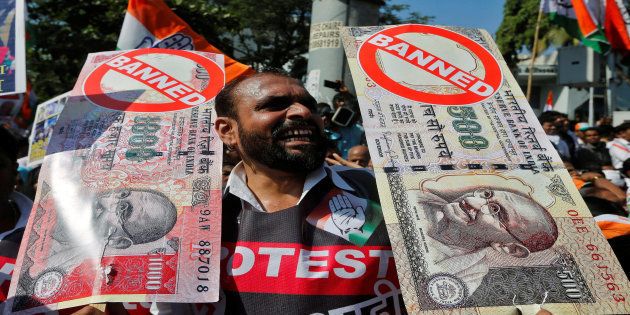
After the initial euphoria over thousands of crores of old currency notes being deposited in the cash-strapped Indian banks, it appears that the glut of money is creating a huge problem of its own.
The Reserve Bank of India on the weekend asked banks to maintain an incremental cash reserve ratio (CRR) of 100 per cent to absorb excess liquidity from the system. CRR is the portion of the deposits which banks are required to park with RBI. The actual current rate of CRR has been four per cent.
RBI's 100% CRR move means that banks will now have to pay the central bank about 6.26 per cent, higher than the 6.22 per cent that banks earn on interest upon depositing extra cash with RBI.
This increased cost of borrowing funds for banks could adversely impact lending rates by banks to retail consumers, with banks also likely to cut sharply the interest rates paid on deposits.
A top fund manager told the Times of India, "to contain further losses, at a time when demand for loans is low, there is no way banks will cut lending rates in the immediate future."
Deutsche Bank analysts Manish Karwa and Manish Shukla said in a report, "The expected gains for banks (from deluge of deposits post demonetisation) could turn out to be a net loss for them...the immediate reaction of banks would be to cut deposit rates, especially retail term deposit sharply -maybe by 50-100 basis points."
Banks have also been under tremendous financial pressure to make provisions for bad loans that is already straining their balance sheets.
"Increase in CRR is a part of the liquidity management strategy used by the RBI. Perhaps it has become necessary in the context of excess liquidity in the system. As you know excess liquidity adds to the volatility in the currency market," Economic Affairs Secretary Shaktikanta Das has said. The government is also considering an additional tool to manage excess liquidity, he added.
Das refrained from guessing on what RBI will do in its next monetary policy review due later next month.
With PTI inputs